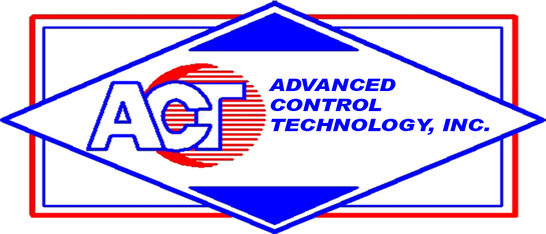What are the disadvantages of capacitive level sensor?
Capacitive level sensors are widely regarded for their precision in liquid and material level measurement across various industries. However, like any technology, they come with certain challenges that can impact their effectiveness and suitability for certain applications. At ACT Sensors, we believe in empowering our clients with knowledge to make informed decisions, and in this blog post, we will explore the key disadvantages of capacitive level sensors.
1. Sensitivity to Material Properties
In addition to the challenges posed by varying dielectric constants, capacitive level sensors may also struggle with detecting low-conductivity materials. Materials with a very low dielectric constant may not produce a strong enough capacitive change for the sensor to accurately measure levels, leading to potential errors in readings. Furthermore, environmental factors—such as temperature and humidity—can alter the electrical properties of the material being measured, further complicating the sensor's ability to deliver consistent measurements. This necessitates regular maintenance and consistent environmental monitoring to ensure accuracy, which can be resource-intensive. Ultimately, users must carefully evaluate these factors when selecting capacitive level sensors for specific applications, weighing the pros and cons based on their unique operational needs.
2. Maintenance Challeges Due to Material Buildup
In addition to the need for consistent maintenance, the challenges posed by material buildup can vary significantly depending on the specific application and environment. Sensors operating in high-dust or particle-rich environments, such as in powder or granular material measurement, are particularly susceptible to this issue. The accumulation of non-conductive materials on the sensor can result in diminished accuracy and reliability over time. Furthermore, maintenance teams must ensure safe and efficient access to these sensors, which can be difficult in installations with limited space or hazardous conditions. To mitigate these challenges, some industries opt for automated cleaning systems or alternative sensor technologies that may offer better performance under such demanding conditions. Despite these solutions, the potential for increased operational costs and downtime remains a major concern for businesses relying heavily on capacitive level sensors.
3. Issue with Metallic Containers

Capacitive level sensors can encounter difficulties when used with metallic or conductive containers. The metal interferes with the sensor’s electric field, compromising accuracy. While solutions such as coating the container or insulating the sensor exist, they add complexity and cost to the installation process. Industries using metallic equipment might need to consider alternative sensor types or adaptations to accommodate capacitive technology. Additionally, the presence of metallic components can create unintended capacitive coupling, leading to false readings or even sensor failure. This issue is particularly critical in environments where precision is paramount, such as in pharmaceutical or food processing industries. Careful assessment and expert consultation are necessary to determine the feasibility of using capacitive sensors in conjunction with metallic containers and to explore the potential implementation of isolation techniques to minimize interference.
4. Susceptibility to Environmental Factors
Environmental conditions, particularly temperature and humidity, can significantly impact the performance of capacitive sensors. Fluctuations in these factors can affect the dielectric properties of materials being measured, resulting in sensor drift and inaccurate readings. In dynamic industrial settings, frequent recalibration may be necessary to maintain accuracy, adding to operational challenges. Additionally, extreme environmental conditions can accelerate the aging process of the sensor, leading to a shortened lifespan. Exposure to harsh weather conditions, such as heavy rainfall or intense sunlight, can also degrade the materials used in the sensor itself, affecting its durability and leading to increased maintenance costs. As a result, industries operating in such environments must consider the long-term implications on both performance consistency and maintenance requirements, potenti
5. Higher Cost and Complexity

Compared to simpler sensing technologies, capacitive sensors tend to have a higher initial cost. Their installation and calibration are often more complex, especially in environments with fluctuating conditions or challenging materials. For industries where high sensitivity is not a priority, the cost and complexity of capacitive sensors may not justify their use, prompting a search for more cost-effective alternatives. Additionally, the need for specialized training and expertise in handling these sensors can lead to increased personnel costs. The intricate installation process often requires skilled technicians, which can further escalate expenses. Moreover, the integration of capacitive sensors into existing systems can be challenging, particularly when retrofitting older equipment, necessitating potentially costly system upgrades or modifications. Companies must evaluate the total cost of ownership, taking into account the expenses related to purchase, installation, calibration, maintenance, and potential system upgrades, to ensure the financial viability of using capacitive level sensors for their specific needs.
Conclusion
Despite these challenges, capacitive level sensors remain a valuable tool for many applications. However, understanding their limitations is crucial for selecting the right sensor technology. At ACT Sensors, we offer a range of solutions, including innovative float switches and custom sensor designs, to address these challenges. Our team of skilled engineers is ready to work with you to develop a sensor solution that meets your specific needs, ensuring accuracy, reliability, and cost-effectiveness.
If capacitive level sensors present challenges for your application, contact us at ACT Sensors. We are committed to providing high-quality, tailored solutions that deliver the performance you need, backed by our guarantee of satisfaction and expert support.
Disclaimer: This article describes installation and integration of industrial-grade sensors in hydraulic systems. These tasks should only be carried out by trained and qualified personnel in accordance with applicable safety standards and equipment specifications.
